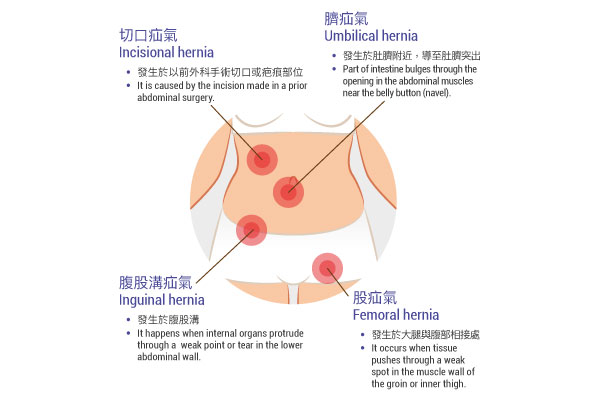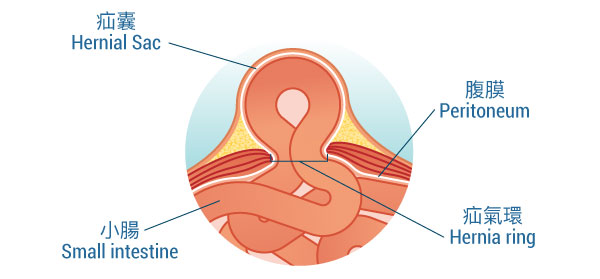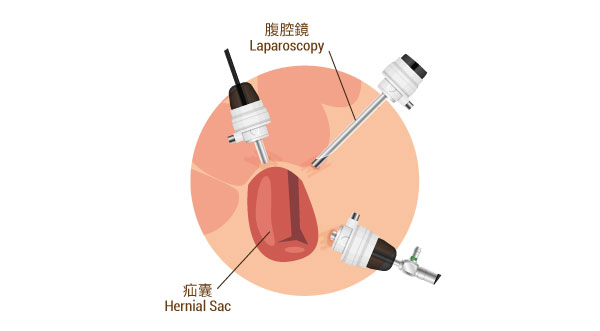Ignoring Hernia Symptoms Could Lead To Emergency

What is the hernia?
Hernias happen when internal organs, such as intestines, protrude through a weak point or tear in the lower abdominal wall, forming a lump in the abdomen or groin. Inguinal hernias are typically classified into the below sub-types based on different areas:
| Inguinal hernia | It happens when internal organs protrude through a weak point or tear in the lower abdominal wall. |
| Femoral hernia | It occurs when tissue pushes through a weak spot in the muscle wall of the groin or inner thigh. |
| Umbilical hernia | Part of intestine bulges through the opening in the abdominal muscles near the belly button (navel). |
| Incisional hernia | It is caused by the incision made in a prior abdominal surgery. |

How a hernia is caused?
Inguinal hernias may occur in people of all ages. This may be resulted from chronic coughing, constipation, dysuria or frequent heavy lifting. Hernias usually occur in the groin area, near the navel or previous incision wounds.

Problems associated with hernia
Hernias can cause discomfort and inconvenience to the patients. If you suspect you have a hernia, please contact your primary care provider or a specialist. If left alone, hernia may get bigger in time and becomes irreducible. There is always a danger of trapping intestine in the hernia leading to blockage of the gut and some life-threatening complications, such as intestinal strangulation and subsequent infarction, and death of bowel tissue.
Symptoms of hernia
Hernia presents as a bulge underneath the skin which frequently appears on standing up and when one coughs. Hernias commonly appear in the inguinal region, at around the navel and at sites of previous surgical incisions. Symptoms of hernias can depend on the severity and location. Common signs and symptoms include: A lump or bulge in the abdomen or groin, which emerges when standing up and disappears upon lying down; Frequent pain or discomfort, particularly when heavy lifting, coughing, or straining; A heavy, pulling sensation near the lump.
How to diagnose the hernia?
Doctor will perform a physical examination of the abdomen or groin area to examine the lump or bulge. Other diagnostic tools may include an ultrasound or CT scan.
How to fix a hernia?
There are two ways to fix a hernia in general, surgeons used to use the open surgical method which required an incision of about 5 to 10cm to the skin over the site of the hernia in order to repair the abdominal defect. Now we have the minimally invasive approach with the use of laparoscopy.

What is minimally invasive hernia repair?
The minimally invasive hernia repair is a new method of laparoscopic approach which requires one 1cm incision at the belly button and two other 0.5cm puncture holes at the lower abdomen for the completion of the repair.

Advantages of the minimally invasive hernia repair
The minimally invasive hernia repair is a good choice since the risk of wound infection is also lower when compared to open surgical repair. As the procedure only involves several small incisions, patients feel less pain and recover relatively quicker than they would from open hernia repair.
Is minimally invasive hernia repair suitable for everyone?
The procedure involves the use of general anaesthesia. For patients with chronic diseases, heart disease, or those who have had previous major abdominal surgery, please consult a specialist for a tailor-made treatment.
*The above information is for reference only, please consult your doctor for detail.

 3405 8288
3405 8288
